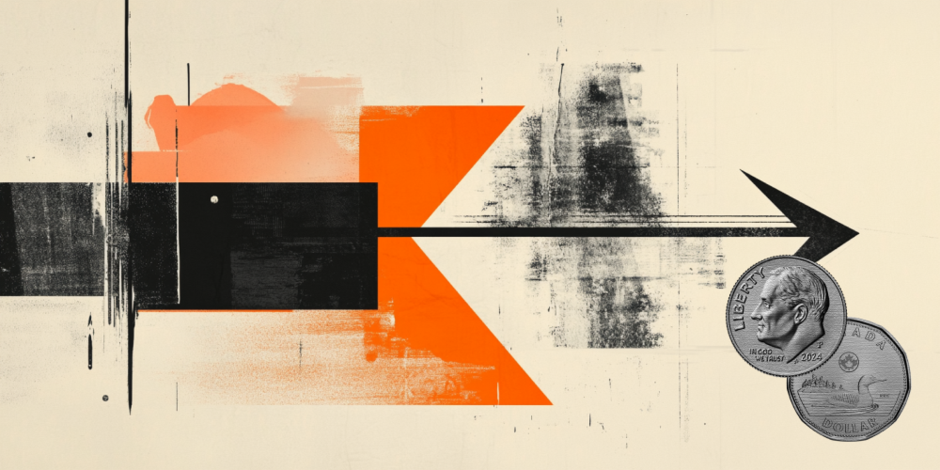USD/CAD rebounds toward 1.4000 as crude Oil weakness weighs on Canadian Dollar
- USD/CAD trims its intraday losses as the Canadian Dollar weakens amid falling crude Oil prices.
- WTI continued its downward trend, sliding nearly 3% on Thursday after a more than 1% drop in the previous session.
- Speculation is building that the US may prefer a weaker dollar to boost trade competitiveness.

USD/CAD stabilized around 1.3980 during Thursday’s European trading hours, recovering earlier losses as the Canadian Dollar (CAD) came under pressure due to declining crude Oil prices. Given Canada’s status as the largest Oil exporter to the United States (US), falling Oil prices often dampen CAD sentiment.
West Texas Intermediate (WTI) Oil price extended its recent decline, dropping around 3% on Thursday after losing over 1% in the prior session. At the time of writing, WTI hovers near $60.60 per barrel, with prices pressured by mounting concerns over a potential global supply glut.
Market sentiment was further influenced by comments from US President Donald Trump, who stated, “I think we are getting very close to getting a deal with Iran. Iran has agreed to the terms; we want them to succeed. We were losing the Middle East due to the past administration.”
Despite CAD weakness, the USD/CAD pair faces some resistance as the US Dollar (USD) remains weighed down by persistent trade uncertainties, even as tensions show signs of easing. Traders are now looking ahead to key US economic releases, including Retail Sales and Producer Price Index (PPI) data due later in the day.
There is also growing speculation that the US may favor a weaker dollar to enhance its trade competitiveness. The Trump administration has argued that a strong Greenback puts American exporters at a disadvantage against countries with weaker currencies.
Still, any downside in the USD could be limited. Improving global trade sentiment has reduced recession fears, leading markets to scale back expectations for aggressive Federal Reserve rate cuts. According to LSEG data, the likelihood of a 25-basis-point cut in September now stands at 74%, down from earlier predictions for a cut in July.
Canadian Dollar FAQs
The key factors driving the Canadian Dollar (CAD) are the level of interest rates set by the Bank of Canada (BoC), the price of Oil, Canada’s largest export, the health of its economy, inflation and the Trade Balance, which is the difference between the value of Canada’s exports versus its imports. Other factors include market sentiment – whether investors are taking on more risky assets (risk-on) or seeking safe-havens (risk-off) – with risk-on being CAD-positive. As its largest trading partner, the health of the US economy is also a key factor influencing the Canadian Dollar.
The Bank of Canada (BoC) has a significant influence on the Canadian Dollar by setting the level of interest rates that banks can lend to one another. This influences the level of interest rates for everyone. The main goal of the BoC is to maintain inflation at 1-3% by adjusting interest rates up or down. Relatively higher interest rates tend to be positive for the CAD. The Bank of Canada can also use quantitative easing and tightening to influence credit conditions, with the former CAD-negative and the latter CAD-positive.
The price of Oil is a key factor impacting the value of the Canadian Dollar. Petroleum is Canada’s biggest export, so Oil price tends to have an immediate impact on the CAD value. Generally, if Oil price rises CAD also goes up, as aggregate demand for the currency increases. The opposite is the case if the price of Oil falls. Higher Oil prices also tend to result in a greater likelihood of a positive Trade Balance, which is also supportive of the CAD.
While inflation had always traditionally been thought of as a negative factor for a currency since it lowers the value of money, the opposite has actually been the case in modern times with the relaxation of cross-border capital controls. Higher inflation tends to lead central banks to put up interest rates which attracts more capital inflows from global investors seeking a lucrative place to keep their money. This increases demand for the local currency, which in Canada’s case is the Canadian Dollar.
Macroeconomic data releases gauge the health of the economy and can have an impact on the Canadian Dollar. Indicators such as GDP, Manufacturing and Services PMIs, employment, and consumer sentiment surveys can all influence the direction of the CAD. A strong economy is good for the Canadian Dollar. Not only does it attract more foreign investment but it may encourage the Bank of Canada to put up interest rates, leading to a stronger currency. If economic data is weak, however, the CAD is likely to fall.
Author

Akhtar Faruqui
FXStreet
Akhtar Faruqui is a Forex Analyst based in New Delhi, India. With a keen eye for market trends and a passion for dissecting complex financial dynamics, he is dedicated to delivering accurate and insightful Forex news and analysis.

















